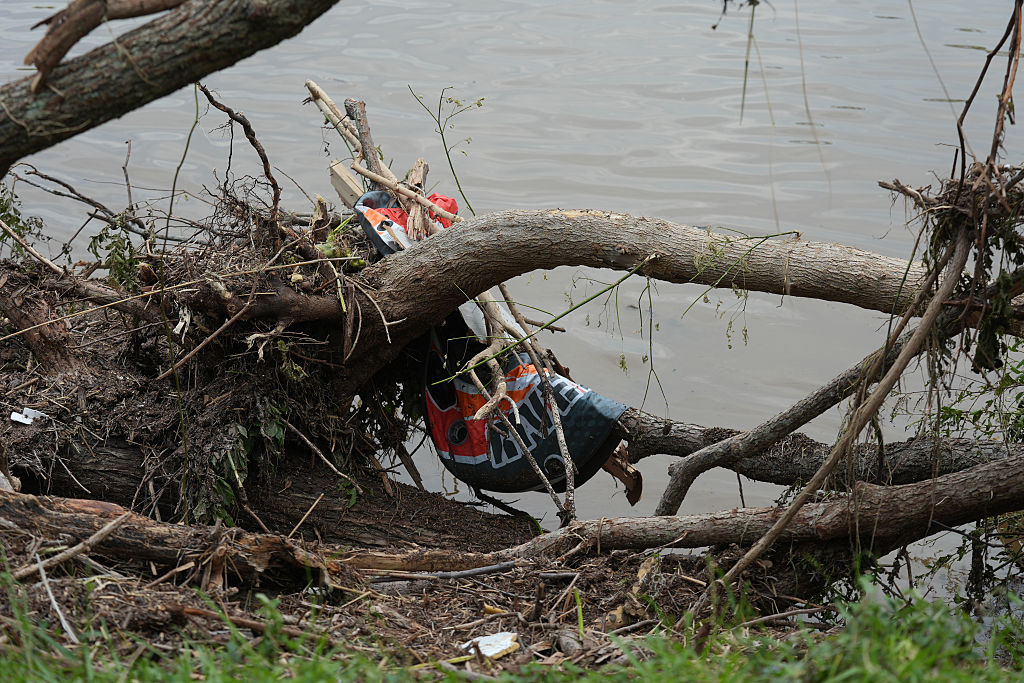Are NOAA Weather Cuts Leaving Black Communities Vulnerable This Storm Season?

Texans are still reeling from the devastating July 4th flash flood that swept through the Guadalupe River region, leaving at least 109 people dead, including 27 children, according to USA TODAY. The disaster is now considered the deadliest flash flood in recent U.S. history, and experts are raising urgent concerns over whether federal staffing cuts played a role in the tragedy.
The catastrophic flood has reignited scrutiny of sweeping layoffs at the National Oceanic and Atmospheric Administration (NOAA), many of which were initiated earlier this year by the Department of Government Efficiency (DOGE). With more than 880 NOAA and National Weather Service (NWS) employees laid off in two rounds of cuts, some meteorologists and climate researchers say the reductions may have compromised the agency’s capacity to respond effectively to the extreme weather.
As noted by Yale Climate Connections despite facing a 22% staff reduction due to the intense budget cuts, the New Braunfels National Weather Service (NWS) office still managed to issue flood watches over 12 hours in advance and multiple flash flood warnings to residents in the Texas Hill Country areas — including a “Flash Flood Emergency” alert at 4:03 a.m. for Kerr County. The New Braunfels office also hired more staff in preparation for the storm, boosting its weather team from two to five members.
However, Dr. Richard Spinrad, a former NOAA administrator, claimed that one critical role was vacant before the disaster hit: the Warning Coordination Meteorologist. Although staffing levels were deemed adequate and the White House acknowledged that forecasts, watches, and warnings were issued promptly, the critical issue lies in whether those messages were actually received and acted upon. That responsibility typically falls to the Warning Coordination Meteorologist — a key liaison between forecasters and local emergency managers — but that position was vacant at the time of the disaster.
“I am convinced that the staff cuts that we saw were a contributing factor to the inability of the emergency managers to respond,” Spinrad told CNN’s Kate Bolduan on July 8.
Unfortunately, additional roles are expected to be eliminated in the coming year, as the proposed budget released in June would reduce NOAA’s workforce from over 12,000 to around 10,000 employees, according to the Federal News Network.
Research Cuts Threaten Future Preparedness.
DOGE’s staff cuts were not only detrimental to safety, but they could harm future research needed to prevent catastrophic storms from occurring in the future. NOAA’s 2026 proposed budget includes sweeping cuts that would eliminate several research labs, including the National Severe Storms Lab (NSSL) in Norman, Oklahoma — the birthplace of the FLASH system, a tool that significantly improves the accuracy and timing of flash flood warnings.
The department also developed the Multi-Radar/Multi-Sensor (MRMS) system, designed to enhance decision-making during severe weather events. This advanced technology supports more accurate forecasts and warnings by providing critical data for hazardous weather, hydrology, aviation, transportation, and numerical weather prediction.
Alan Gerard, a former researcher and analyst with NOAA’s NSSL, warned that eliminating the NSSL could lead the country down a dangerous path, severely limiting our ability to advance warning technologies that help people take life-saving action during extreme weather events.
“If we had advanced modeling and forecasting that would be able to tell you there’s a pretty high chance that this area is going to get six to nine inches of rain in three hours tonight—that’s a whole different situation,” the weather expert explained during an interview with MSNBC on July 7. “We don’t have that capability right now, but with research and developments that we’re doing, like the National Severe Storms Lab, we could within the next several years.”
Miami-based hurricane specialist Michael Lowry expressed a similar sentiment in a blog post shared Monday.
“The terrible events in Texas the past few days do serve as a salient reminder of why NOAA-developed tools and National Weather Service forecasts are so critical to this country,” he penned. “One of the primary tools we use to predict flash floods like the ones in Central Texas come from the Multi-Radar/Multi-Sensor System, a project of the National Severe Storms Laboratory or NSSL in Norman, Oklahoma. I’ve zero doubt NWS forecasters were leveraging that tool that evening to issue flash flood warnings. The National Severe Storms Laboratory and associated projects like this one are slated for elimination in NOAA’s proposed 2026 budget, which would be detrimental to our ability to forecast these types of deadly floods in the future.”
Disproportionate Impact on Vulnerable Communities.
Looking ahead, the tragedy in Texas foreshadows broader concerns about climate vulnerability and environmental justice. According to a 2023 Congressional Budget Office (CBO) study, lower-income and Black communities face a rapidly rising flood risk due to climate change and sea-level rise.
In 2023, the CBO found that by 2050, Black communities — particularly along the Gulf and Atlantic coasts — will face at least a 20% increase in flood risk. Coastal states like Texas, Florida, and Virginia are home to many of these at-risk populations.
Additionally, a 2020 study led by the University of Arizona found that Black and Hispanic communities, as well as individuals with low incomes, are more likely to live in areas at high risk of flooding from natural disasters compared to white and Asian populations, leaving them at a greater risk of danger.
It’s becoming abundantly clear that flood risk isn’t just growing — it’s growing unequally. Climate change is making these events more frequent and more deadly. Cutting our ability to predict and prepare for them is a risk we simply can’t afford.
SEE MORE:
10 Modern-Day Examples Of Environmental Racism
Environmental Racism: How Racist Policies Around Climate Affect Black People




